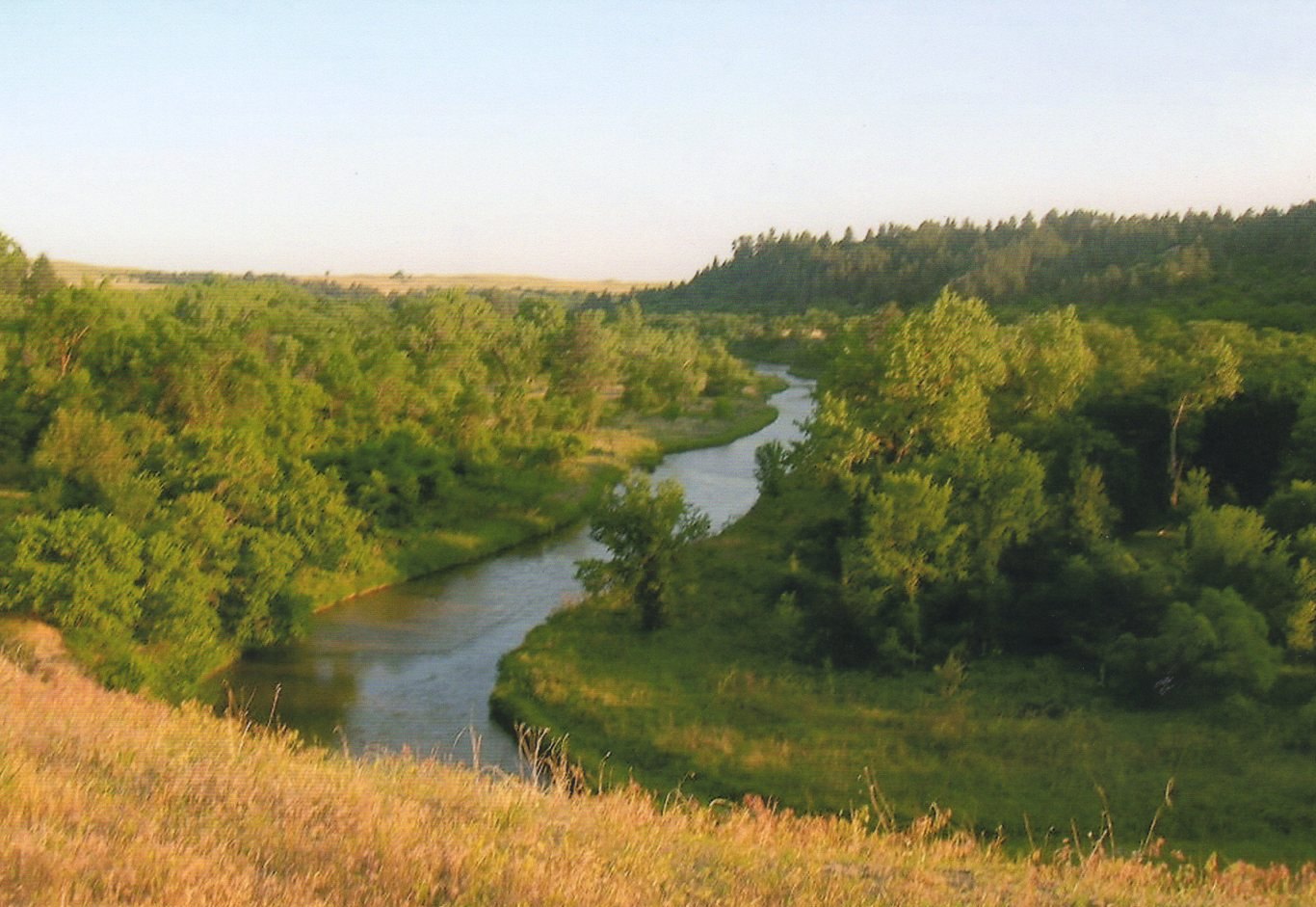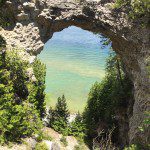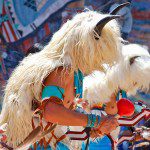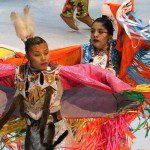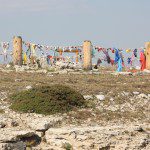
Following up on my post of two days ago, I want to share a few more pictures and impressions from our visit to the Rosebud Indian Reservation in South Dakota. Bob and I were honored to be warmly hosted by Jim Stands and Sylvan White Hat, Lakota men from the reservation.
The Rosebud was unexpectedly beautiful (we thought it would be more like the neighboring Pine Ridge Reservation, which is dryer and harsher in its topography). Instead we drove through many places that reminded us of the Black Hills, with lush grasslands, colorful canyons, and sweeping vistas of sky and clouds.
The Lakota people who live here trace their lineage to the Tribes of the Great Sioux Nation, which signed treaties with the U.S. government in the 1880s recognizing their rights as a sovereign government. The Sioux Nation includes seven tribes, one of which is the Lakota. With that tribe, those who live on the Rosebud Reservation are the Sicangu. While the reservation was originally formed in 1889, its boundaries were subsequently reduced and the Sicangu people moved five times before the Rosebud agency was established. They continue to have the status of a sovereign nation, which gives them the right to manage tribal affairs, create and enforce tribal laws, elect their own officials, and regulate their own territory.
Today the 1,442 square-mile reservation is home to about 21,000 people and includes Sinte Gleske University, where Sylvan teaches Lakota Studies. The school is named after Sinte Gleske, a great Lakota leader whose name meant Spotted Tail. We were impressed by its campus, which offers a variety of arts and sciences and vocational programs. The leaders of the reservation are almost all graduates of Sinte Gleske, we learned.
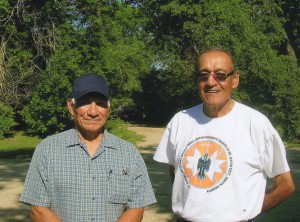
We were fortunate to have a personalized tour, but Jim and Sylvan said the reservation is eager to welcome all visitors, especially to its pow wows. You can go to Rosebud Sioux Tribe for more information about visiting. On the website, I was particularly struck by this passage:
If your journey brings you to us, be prepared to make inner relations with yourself and everything around you. You may find that, perhaps like your tribe, that not all of us are of one heart, but when we remember, we become part of a sacred goal. Our limitations are the same as the limitations of all people, selfishness, cold-heartedness, and easy justifications (coyote medicine). The integrity of a well initiated individual is evident by the unique gifts he brings to the circle. Each person is made up of experiences exclusive to the self, but a strong community can handle that without feeding the bad spirit of conformity. Be receptive to creation, and become generous by that action. Should you choose to give Wicozani na Wokiye (Health and Help) to the people, please select from our menu of legitimate tribal organizations. You will know when you made connection between our nations. We need help on counting coup on the ignorance between us.
“Counting coup” refers to the traditional Lakota practice of winning prestige in a battle not by injuring an opponent, but by touching him with a hand or stick and then escaping unharmed. What a wonderful alternative to standard warfare! And I like that phrase about “counting coup on ignorance,” especially. The reference to Coyote Medicine is interesting too. When you learn something the hard way, it’s said that you have gotten a dose of coyote medicine.
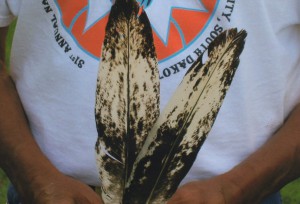
One of my favorite moments on the reservation came when Sylvan White Hat showed us the eagle feathers at left. Under federal law, Native Americans can legally possess eagle feathers for ceremonial use (the rest of us can be fined thousands of dollars for having one). Sylvan went through a lengthy process to obtain these Spotted Eagle feathers and rightly treasures them. They are indeed magnificent–long, delicately shaded, and possessing something that the Maori in New Zealand would likely recognize as mana (spiritual power).
We hope to visit the Rosebud Reservation again one day, to renew our friendship with Jim and Sylvan and learn more about Lakota culture. In the meantime, I also hope to count coup on ignorance and avoid coyote medicine.
